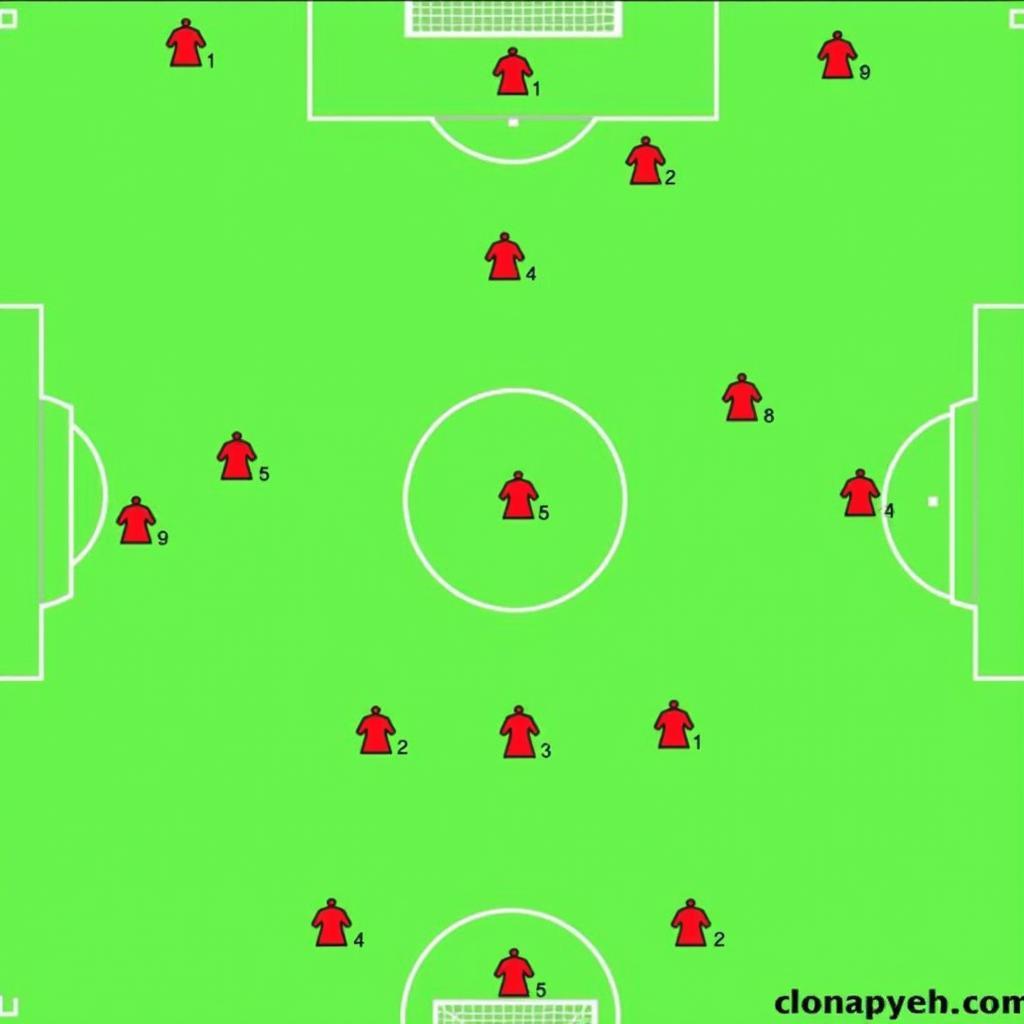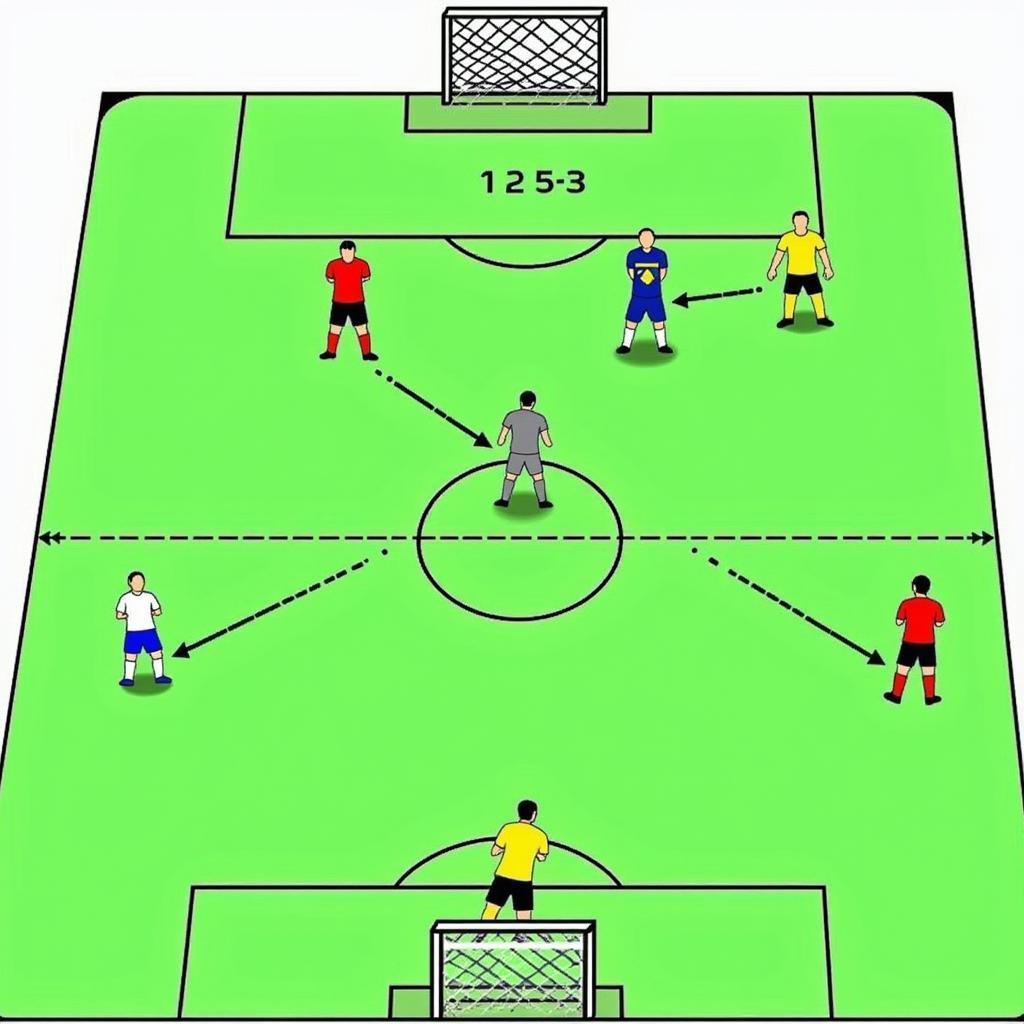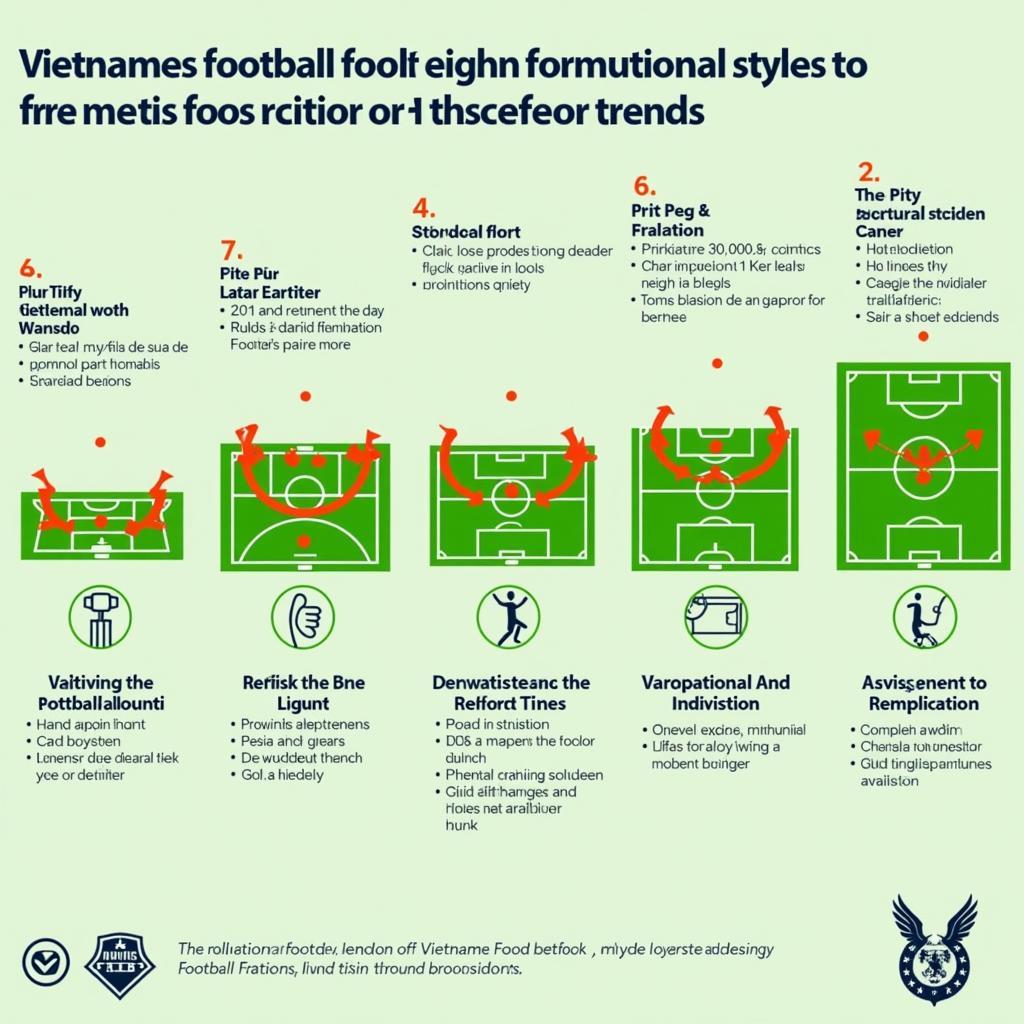Understanding Vietnamese Football Player Formations
November 5, 2024Vietnamese football has seen a surge in popularity and competitiveness in recent years. A key element to this success lies in understanding the tactical nuances, particularly the formations employed. This article delves into the intricacies of Vietnamese football player formations, providing insights into their evolution, strengths, and weaknesses.
As a striker, I appreciate the importance of a well-structured formation. It dictates the flow of the game, offensive opportunities, and defensive solidity. Understanding these formations isn’t just for coaches; it’s beneficial for players and fans alike. For players, it helps anticipate movements and exploit weaknesses. For fans, it adds another layer of appreciation for the beautiful game. Want to know more about player formations, check out this article about Nguyễn Duy Mạnh cầu thủ.
Common Vietnamese Football Player Formations
Vietnamese football, influenced by global trends and adapted to the specific strengths of Vietnamese players, often utilizes a few key formations.
4-4-2: The Balanced Approach
The 4-4-2 formation is a classic and remains a popular choice. It provides a good balance between attack and defense. Two central midfielders offer stability, while two wingers provide width and supply crosses to the two strikers upfront. This formation is particularly effective when a team possesses strong wingers and clinical strikers.
 Vietnamese Football 4-4-2 Formation Diagram
Vietnamese Football 4-4-2 Formation Diagram
This formation can be adapted to a more defensive 4-5-1 by bringing a midfielder further back, or a more attacking 4-3-3 by pushing a midfielder forward. It’s adaptable and allows Vietnamese teams to adjust based on the opponent and game situation.
3-5-2: The Modern Approach
The 3-5-2 formation has gained traction in recent years, offering a more dynamic approach. With three central defenders, it provides defensive solidity while allowing wing-backs to push forward and contribute to the attack. This formation is particularly effective when a team possesses strong wing-backs with both defensive and attacking capabilities. Want to know more about players, check out this article about hình cầu thủ k+ seagame.
5-4-1: The Defensive Strategy
When facing stronger opponents, Vietnamese teams often opt for the 5-4-1, prioritizing defensive solidity. Five defenders create a formidable barrier, making it difficult for opponents to penetrate. This formation relies on quick counter-attacks and set pieces to create scoring opportunities.
 Vietnamese Football 5-4-1 Formation – A Defensive Strategy
Vietnamese Football 5-4-1 Formation – A Defensive Strategy
“A well-drilled 5-4-1 can be incredibly difficult to break down,” says fictional Vietnamese football analyst Nguyen Van Tuan. “It requires discipline and organization, but it can be very effective, especially against stronger teams.”
Factors Influencing Formation Choices
Several factors influence a coach’s decision on which formation to use. The opposition’s strengths and weaknesses, the playing style of the team, and the availability of players are all crucial considerations. For example, if a team is missing a key midfielder, switching to a 4-4-1-1 might be a viable option. Adaptability is key in modern football. Want to know what some of the Premier League players look like? Take a look at cầu thủ manchester world cup bongda.com.vn.
The Evolution of Vietnamese Football Player Formations: Adapting to Global Trends
Vietnamese football formations have evolved significantly, influenced by global football trends. While traditional formations like the 4-4-2 remain relevant, the adoption of more modern formations like the 3-5-2 and variations demonstrates a willingness to adapt and innovate. “Vietnamese football is constantly evolving,” adds Nguyen Van Tuan. “Coaches are always looking for new ways to improve their teams, and that includes experimenting with different formations.” Want to know about another player? Check out cầu thủ martin lo.
 Evolution of Vietnamese Football Formations – Adapting to Global Trends
Evolution of Vietnamese Football Formations – Adapting to Global Trends
Conclusion: Vietnamese Football Formations – A Key to Success
Understanding Vietnamese football player formations (Sơ đồ Cầu Thủ Bóng đá Việt Nam) provides a valuable insight into the tactical approaches employed in the V.League and international competitions. From the balanced 4-4-2 to the more defensive 5-4-1, each formation has its strengths and weaknesses. The ability to adapt and choose the right formation based on the specific circumstances is crucial for success. Want to see some funny pictures of players? Check out ảnh cầu thủ réu.
FAQ
-
What is the most common formation in Vietnamese football?
The 4-4-2 remains a popular choice, offering balance between attack and defense. -
Why is understanding formations important?
It helps players anticipate movements and exploit weaknesses. For fans, it enhances appreciation of the game. -
How do Vietnamese formations adapt to global trends?
Vietnamese football incorporates modern formations like the 3-5-2, reflecting a willingness to innovate. -
What factors influence formation choices?
Opposition’s strengths, team playing style, and player availability are all crucial considerations. -
How has Vietnamese football evolved tactically?
There’s a shift towards modern formations and a focus on adaptability based on game situations.
When you need support, please contact Phone Number: 0396443476, Email: [email protected] Or visit: 23 Tháng 3, Đắk Nia, Gia Nghĩa, Đắk Nông, Việt Nam. We have a 24/7 customer service team.